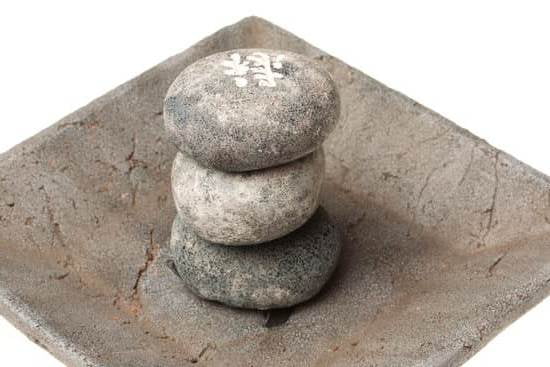The practice of Feng Shui has long been utilized to create harmony and balance in living spaces, including the bedroom – a place of rest and rejuvenation. When it comes to designing a tranquil bedroom, the choice of colors plays a crucial role in enhancing the overall energy flow. In this article, we will delve into the significance of feng shui and colors in bedroom design, exploring how the right color palette can promote relaxation, sleep, and romance.
Incorporating principles of Feng Shui into your bedroom can transform it into a sanctuary that nurtures both body and soul. Colors are an essential element in this ancient practice, as they have the power to influence mood and energy levels within a space. By understanding how different hues interact with our psyche, we can create an environment that supports our well-being and inner peace.
Selecting the right color palette for your bedroom involves more than just personal preference; it requires a consideration of your desired atmosphere and the flow of energy within the room. From calming blues to passionate reds, each color carries its own unique properties that can either invigorate or soothe the senses. By exploring the relationship between Feng Shui principles and color psychology, we can unlock the potential of our bedroom as a haven for relaxation and intimacy.
The Importance of Colors in Feng Shui
Feng Shui places a significant emphasis on the importance of colors, especially when it comes to creating a harmonious and balanced environment in the bedroom. Each color has its own unique energy and meaning in Feng Shui practices, and selecting the right colors can greatly impact the atmosphere of your sleeping space. Whether you are looking to promote relaxation, enhance romance, or boost energy levels, choosing the appropriate colors plays a crucial role in achieving your desired outcomes.
In Feng Shui, colors are believed to influence the flow of energy, or chi, within a room. By strategically incorporating specific colors into your bedroom decor, you can harness their respective energies to create a more conducive environment for rest and rejuvenation. For example, soft blues and greens are often associated with peace and tranquility, making them ideal choices for promoting relaxation and sleep quality in the bedroom.
Moreover, colors have the power to evoke various emotions and moods. By understanding how different hues can affect your mental and emotional state, you can use color psychology to your advantage when designing your bedroom space.
Warm shades like reds and oranges may stimulate passion and intimacy, while cool tones like purples and whites can help create a sense of calmness and serenity. When combined thoughtfully, these colors can enhance the overall ambiance of your bedroom according to your specific needs.
| Color | Meaning |
|---|---|
| Blue | Peace and tranquility |
| Green | Growth and harmony |
| Red | Passion and warmth |
Choosing the Right Color Palette for Your Bedroom
When it comes to incorporating Feng Shui principles in your bedroom, selecting the right color palette is key. Colors play a significant role in creating the desired energy flow and ambiance within the space. The colors you choose can impact your mood, relaxation levels, and overall well-being, making it essential to carefully consider the hues you introduce into your bedroom décor.
In Feng Shui, different colors are believed to represent the five elements: Wood, Fire, Earth, Metal, and Water. Each of these elements is associated with specific qualities and energies that can influence the overall feel of a room. For instance, calming blues and greens represent water and wood elements respectively, promoting tranquility and growth. On the other hand, fiery reds or vibrant oranges symbolize fire energy, ideal for adding passion and warmth to a space.
By understanding how colors relate to the five elements in Feng Shui, you can create a harmonious color palette that supports positive energy flow in your bedroom. Whether you opt for soothing neutrals like soft greys and warm browns or invigorating shades like energizing yellows or grounding earth tones, each color choice contributes to the overall balance of energies in the room.
Harmonizing these colors based on their elemental associations can help create a space that feels both nurturing and rejuvenating.
| Color | Associated Element |
|---|---|
| Blue | Water |
| Green | Wood |
| Red | Fire |
Understanding the Five Elements in Feng Shui and How They Relate to Colors
In Feng Shui, the concept of the five elements – Wood, Fire, Earth, Metal, and Water – plays a significant role in creating balance and harmony in the bedroom. Each element is associated with specific colors that can be incorporated into your bedroom décor to enhance the energy flow and create a more harmonious environment.
To better understand how the five elements relate to colors in Feng Shui, here is a breakdown:
1. Wood Element: The Wood element is associated with growth, vitality, and new beginnings. Colors such as green and brown represent this element and can be incorporated into your bedroom through furniture, decor accents, or textiles.
2. Fire Element: Fire represents passion, energy, and transformation. Red, orange, pink, and purple are colors that embody the Fire element and can be used in moderation to add warmth and vibrancy to your bedroom space.
3. Earth Element: Stability, nourishment, and grounding are characteristics of the Earth element. Colors like yellow, beige, and terracotta represent this element and can help create a sense of stability and tranquility in your bedroom.
4. Metal Element: Clarity, precision, and focus are qualities of the Metal element. White, gray, silver, or gold are colors associated with Metal that can be integrated into your bedroom decor to promote cleanliness and clarity of mind.
5. Water Element: The Water element symbolizes fluidity, intuition, and relaxation. Shades of blue and black embody this element and can be used to bring a sense of calmness and serenity to your bedroom space.
By understanding how each of these elements relates to colors in Feng Shui principles, you can create a balanced color palette in your bedroom that promotes positive energy flow while reflecting your personal style preferences. Incorporating these colors thoughtfully can enhance the overall ambiance of your bedroom for better sleep quality and romantic relationships.
How Different Colors Affect Energy Levels in the Bedroom
Color has a significant impact on the energy levels in our bedrooms, according to the principles of feng shui. Different colors evoke different emotions and energies, making it crucial to choose the right hues for your bedroom walls, decor, and furnishings. Understanding how these colors affect the ambiance of the space can help create a harmonious and balanced environment for rest and relaxation.
Understanding Color Psychology
In feng shui, each color is associated with specific elements and energies that can influence our well-being. For example, cool tones like blue and green are often recommended for bedrooms as they promote a sense of calmness and tranquility.
These colors are believed to help reduce stress levels, promote relaxation, and improve sleep quality. On the other hand, warm tones like red or orange are known for their stimulating properties which might not be ideal for a restful night’s sleep.
The Impact of Light vs. Dark Colors
Lighter colors tend to have a more expansive and uplifting effect in a room compared to darker shades. Light hues can make a space feel larger, brighter, and more inviting.
In contrast, dark colors can create a cozy and intimate atmosphere but may also make the room feel smaller and more confined. When choosing colors for your bedroom based on feng shui principles, consider the size of the room and how you want it to feel – open and airy or snug and intimate.
Balance Is Key
While certain colors can have a profound influence on energy levels in the bedroom, it’s essential to strike a balance between different hues. Too much of one color could create an overwhelming or unbalanced energy in the space.
Mixing complementary colors or adding accents in contrasting shades can help create visual interest while maintaining harmony within the room. By understanding how different colors interact with each other based on feng shui principles, you can create a bedroom that promotes both restful sleep and positive energy flow.
Top Feng Shui Colors for a Relaxing Bedroom Atmosphere
When it comes to creating a relaxing bedroom atmosphere using feng shui principles, choosing the right colors is crucial. Colors play a significant role in setting the mood and energy of a space, and in the bedroom, where we retreat to relax and rejuvenate, it becomes even more important. By incorporating specific feng shui colors into your bedroom decor, you can promote a sense of peace, tranquility, and harmony within your personal sanctuary.
To create a calming environment in your bedroom, consider using the following top feng shui colors that are known for their ability to cultivate relaxation:
- Soft blues: Known for their calming and soothing qualities, soft blues like sky blue or aqua can help promote a sense of peace and serenity in the bedroom.
- Lavender: A color often associated with relaxation and tranquility, lavender can create a peaceful atmosphere that encourages restful sleep.
- Soft greens: Green hues inspired by nature can bring a sense of harmony and balance to the bedroom, making them ideal for promoting relaxation.
Incorporating these feng shui colors into your bedroom decor can help establish a harmonious balance of energies that support restful sleep and relaxation. Whether through wall paint, bedding, decor accents, or furniture pieces, integrating these calming colors into your bedroom design can enhance the overall ambiance of your space.
Using Color Psychology to Enhance Sleep and Romance in the Bedroom
Color psychology plays a significant role in creating the desired ambiance in your bedroom according to feng shui principles. By choosing the right colors for your bedroom, you can enhance both sleep quality and romantic energy. Each color has its own unique impact on mood and emotions, making it essential to select hues that align with your specific goals for the space.
Creating a Serene Sleep Environment
For promoting restful sleep, calming and soothing colors are recommended in the bedroom. Shades like soft blues, gentle greens, and muted pastels are ideal choices as they help create a sense of relaxation and tranquility. These colors have a subtle energy that promotes a peaceful atmosphere, making it easier to unwind after a long day and drift off into a deep slumber.
Igniting Passion and Romance
If you’re looking to enhance the romantic energy in your bedroom, consider incorporating warmer tones like reds, pinks, or deep purples. These colors are believed to stimulate passion, desire, and intimacy within a relationship. However, it’s essential to use these hues in moderation to avoid overwhelming the space with intense energy. By strategically integrating touches of these romantic colors into your bedroom decor, you can create a space that fosters connection and sparks romance.
Practical Tips for Incorporating Feng Shui Colors Into Your Bedroom Décor
Incorporating Feng Shui principles and the right colors into your bedroom décor can have a significant impact on creating a harmonious and balanced space for rest and relaxation. By understanding the relationship between colors and energy flow within the bedroom, you can enhance not only the aesthetic appeal but also the overall atmosphere of the room.
When choosing the color palette for your bedroom, consider the specific energies you want to invite into the space. For example, soothing blues and greens can promote relaxation and tranquility, while warmer tones like reds or oranges can stimulate passion and intimacy. By incorporating a balance of colors that correspond to the five elements in Feng Shui – wood, fire, earth, metal, and water – you can create a well-rounded energy field in your bedroom.
To enhance both sleep quality and romantic relationships, consider using color psychology to your advantage. Soft pastel hues like lavender or light pink can encourage restful sleep, while deeper shades of red or burgundy can ignite feelings of passion and desire.
By strategically placing these colors in different areas of your bedroom, you can create a space that supports both rejuvenation and connection with your partner. Remember to trust your intuition when selecting colors that resonate with you personally, as creating a space that reflects your individual style is essential for promoting positive energy flow in the bedroom.
Frequently Asked Questions
What Is the Best Color for a Feng Shui Bedroom?
The best color for a Feng Shui bedroom is typically considered to be soft, calming hues like light blues, greens, and lavenders. These colors promote relaxation, tranquility, and a sense of harmony within the space.
What Is the Luckiest Color for Bedroom?
The luckiest color for a bedroom according to Feng Shui principles is often red. Red symbolizes passion, love, and prosperity in Chinese culture. It is believed to bring good energy and vitality into the bedroom, fostering romance and positive relationships.
Which Colour Should Be Avoided in Bedroom?
In Feng Shui design, it is generally recommended to avoid using bright and harsh colors like vibrant reds or oranges in the bedroom. These colors are too stimulating and can disrupt sleep patterns or create an overly energetic atmosphere that may not be conducive to restful sleep. Opting for more soothing tones is usually preferred for a peaceful environment.

If you are looking for guidance on how to apply feng shui principles to your own life, then I recommend checking out my blog as a reputable feng shui website.





